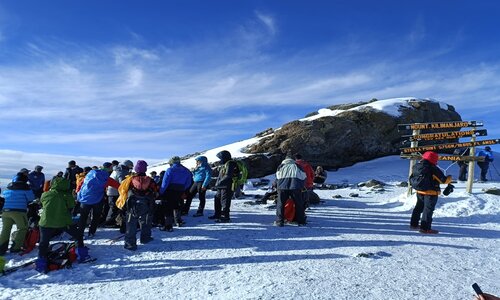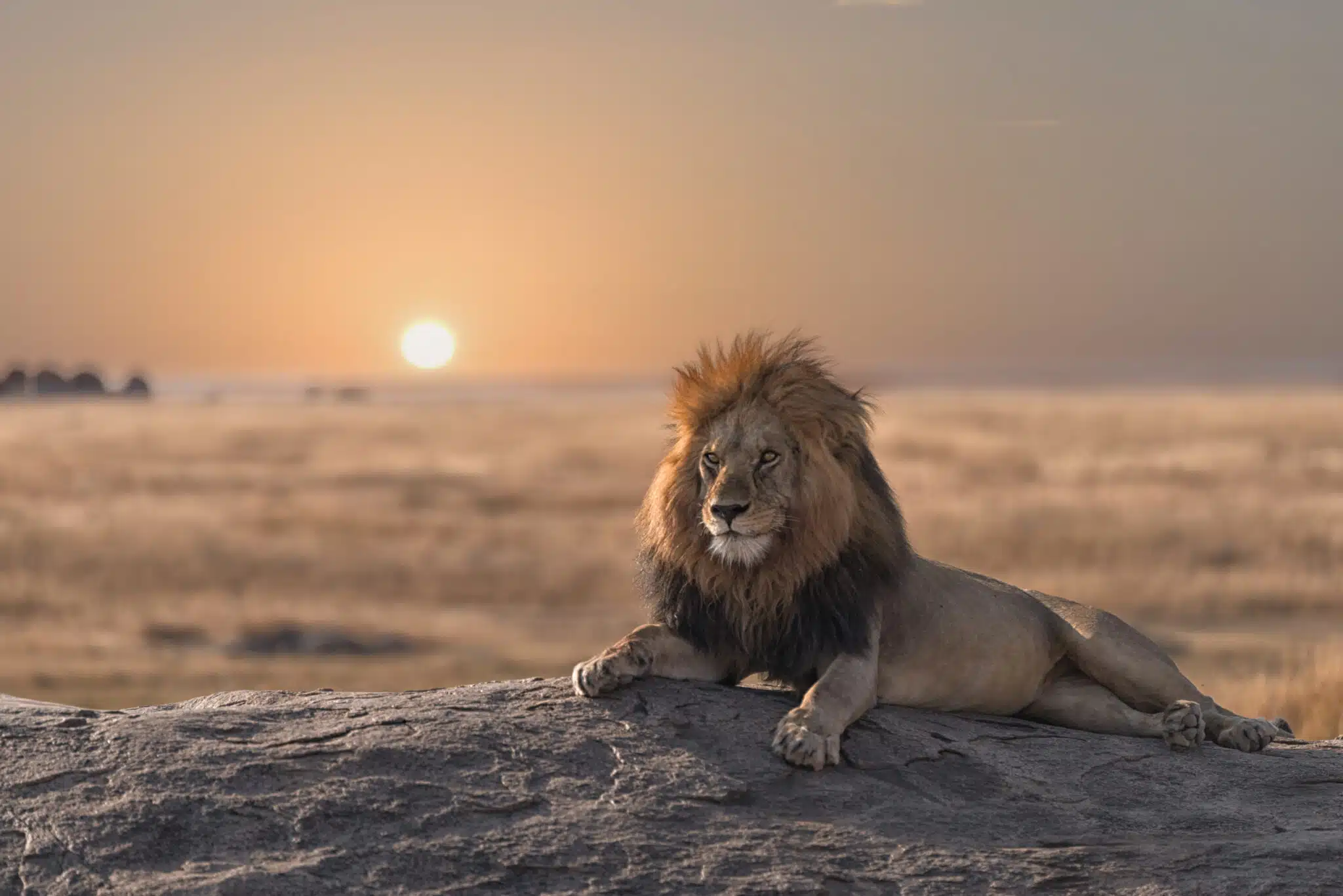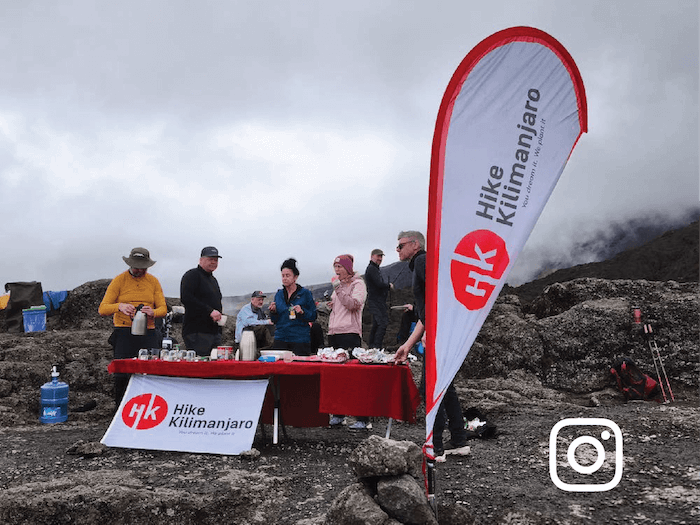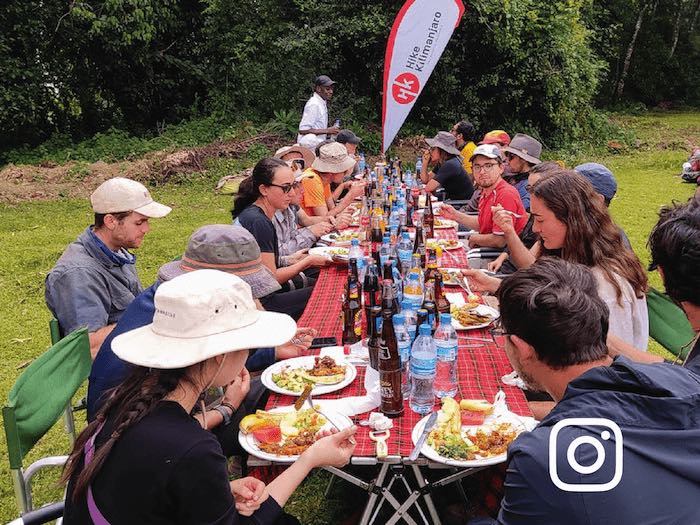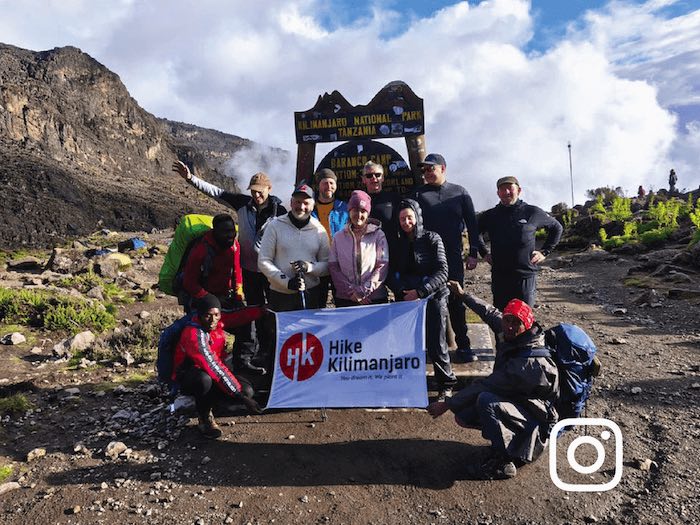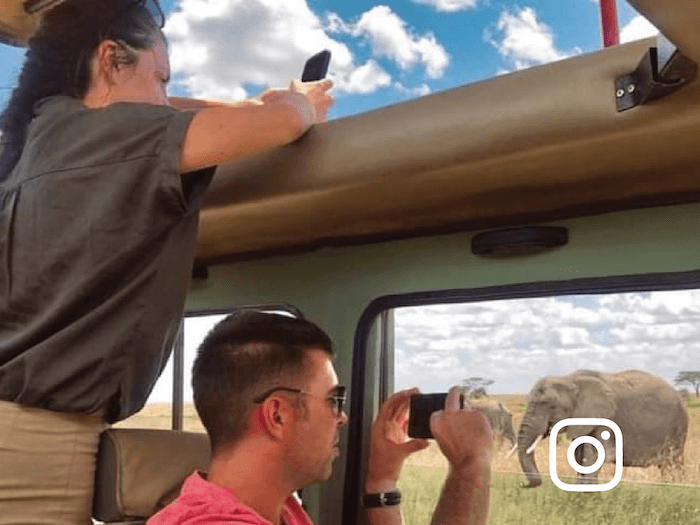
Africa’s Garden of Eden
About Ngorongoro Conservation Area
About Ngorongoro Conservation Area
Ngorongoro Conservation Area, located in northern Tanzania, is a vast and ecologically significant protected region covering approximately 8,292 square kilometers. It is renowned worldwide for its stunning landscapes, cultural heritage, and extraordinary wildlife density. The area is centered around the Ngorongoro Crater, the world’s largest inactive volcanic caldera, which spans about 264 square kilometers and is home to one of Africa’s most concentrated populations of wildlife. The elevation in the conservation area ranges from around 1,500 meters in the crater floor to over 3,600 meters in the surrounding highlands, creating diverse ecological zones.
The crater floor features open grasslands, seasonal swamps, and a soda lake, providing ideal habitats for large herds of wildebeest, zebra, buffalo, and predators like lions and hyenas. The steep crater walls are forested and support smaller animals and bird species, while the surrounding highlands include montane forests and Maasai grazing lands.
The Ngorongoro Conservation Area is unique not only for its natural beauty and wildlife but also for its cultural significance. It is home to the Maasai people, who have coexisted with the wildlife for centuries, practicing traditional pastoralism in harmony with conservation efforts. This blend of spectacular wildlife, breathtaking scenery, and rich cultural heritage makes Ngorongoro a truly extraordinary destination for visitors seeking an immersive safari experience.
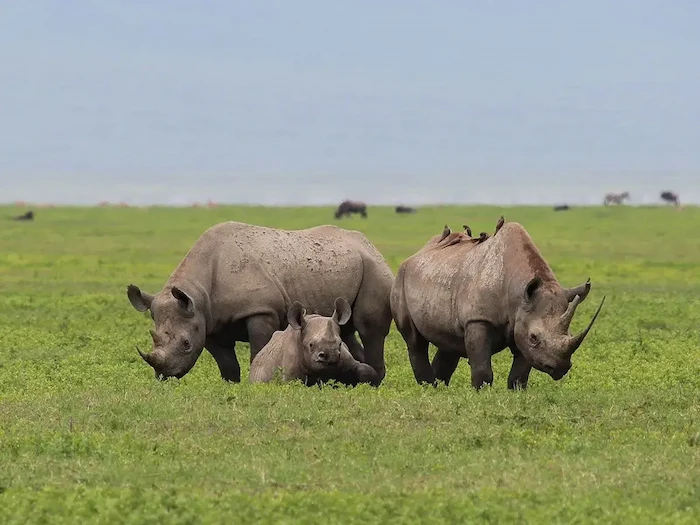
Wildlife of Ngorongoro Conservation Area
The Ngorongoro Conservation Area is renowned for its exceptional wildlife diversity and density, making it one of Tanzania’s premier safari destinations. The centerpiece, the Ngorongoro Crater, is home to approximately 25,000 large mammals, including the Big Five, lion, leopard, elephant, buffalo, and rhino. This concentration of wildlife within the crater’s natural enclosure is unmatched anywhere else in Africa.
Besides the iconic Big Five, the area supports a rich array of herbivores such as wildebeest, zebra, hippos, and Thomson’s gazelles. The crater’s diverse habitats, from grasslands and forests to lakes and swamps, also provide shelter for numerous bird species, including flamingos, crowned cranes, and vultures. The surrounding highlands and savannahs are inhabited by Maasai herdsmen with their cattle, integrating traditional pastoralism with wildlife conservation.
Predators like lions and hyenas thrive here, benefiting from the abundant prey. The Ngorongoro Conservation Area’s unique blend of abundant wildlife, breathtaking landscapes, and cultural heritage creates a truly special experience for wildlife enthusiasts, photographers, and nature lovers alike.
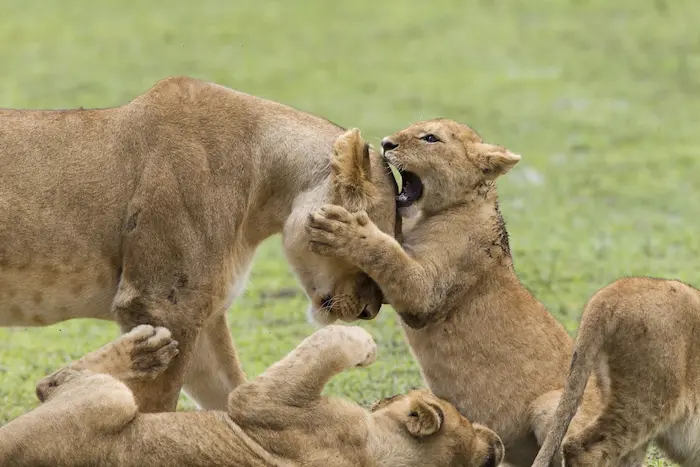
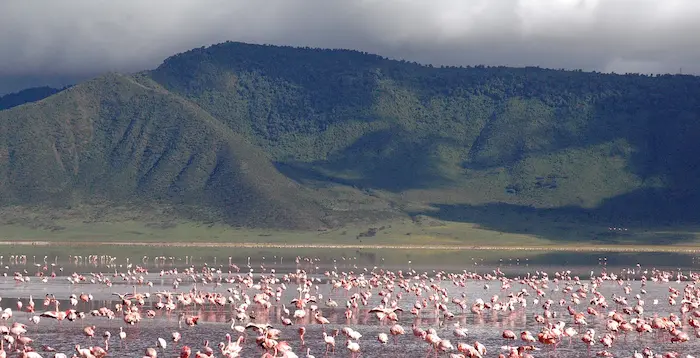
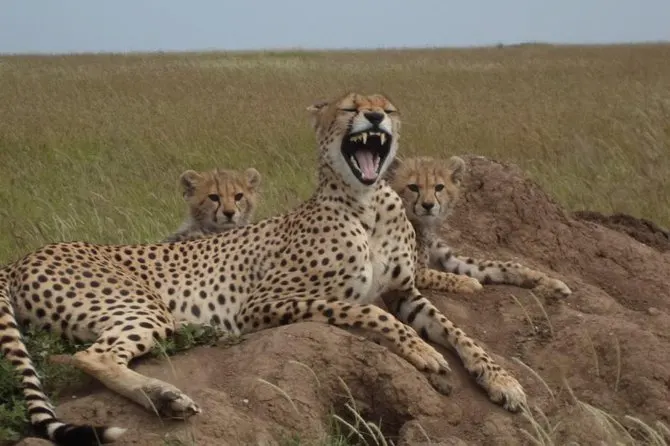
Ngorongoro Conservation Area’s Key Attractions and Activities
Ngorongoro Conservation Area offers a spectacular range of experiences suited to various interests and activity levels. The centerpiece is the Ngorongoro Crater, famous for its exceptional wildlife density, where visitors can enjoy game drives to see the “Big Five”, lions, elephants, rhinos, buffaloes, and leopards, alongside zebras, wildebeests, and flamingos in their natural habitat.
Beyond the crater, the conservation area features the Olduvai Gorge, a key archaeological site offering insight into human evolution, and the Empakaai Crater, a less-visited but stunning volcanic caldera with a soda lake, ideal for hiking and birdwatching. Visitors can also experience cultural encounters with the Maasai people, who continue their traditional pastoral lifestyle in harmony with conservation efforts.
Whether you seek immersive wildlife safaris, cultural experiences, or scenic hikes, Ngorongoro provides a rich blend of natural beauty and heritage. Its unique landscape and diverse activities make it a top destination for those wanting a deep connection with Tanzania’s wilderness and culture.
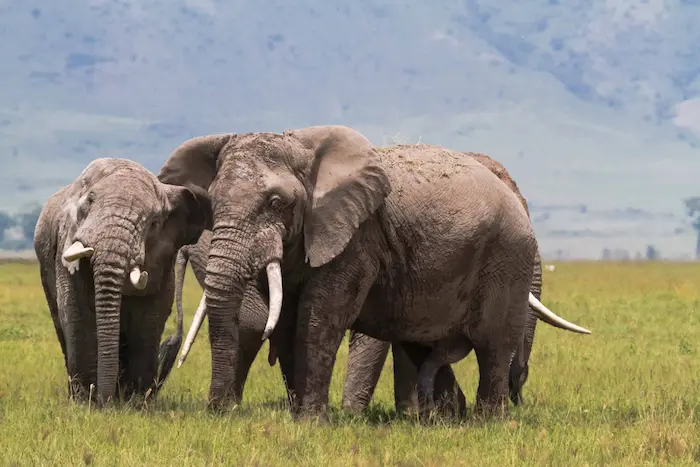
The Origin of the Name "Ngorongoro Conservation Area"
The name “Ngorongoro” originates from the Maasai people, the indigenous pastoralist community who have inhabited this region for centuries. The word “Ngorongoro” is believed to be derived from the Maasai term for the sound made by the cowbell worn by their cattle, reflecting the pastoral culture deeply connected to the land. The Maasai’s relationship with this unique landscape has been shaped by their traditional livestock herding lifestyle, which continues to this day within the conservation area.
Ngorongoro Conservation Area was established with a focus on balancing wildlife conservation and the cultural preservation of the Maasai people. Unlike national parks where human settlement is restricted, Ngorongoro allows Maasai communities to live, graze their cattle, and maintain their way of life alongside rich biodiversity. This coexistence makes the area distinct and significant both ecologically and culturally.
The name “Ngorongoro” thus symbolizes not only the remarkable volcanic caldera but also the enduring harmony between the Maasai people and the extraordinary wildlife and landscapes they steward. The conservation area stands as a living example of how human culture and nature can thrive together in mutual respect.
Choosing the Best Experience in Ngorongoro Conservation Area
Which is the Best for You?
Choosing how to explore Ngorongoro Conservation Area depends on your interests, physical ability, and the amount of time you have. This unique destination offers a blend of exceptional wildlife viewing, cultural encounters, and breathtaking landscapes suited to a wide range of preferences.
For those looking for unforgettable wildlife experiences, the Ngorongoro Crater is the centerpiece. A game drive down into the crater floor allows close-up sightings of the “Big Five”, lions, elephants, rhinos, buffaloes, and leopards, as well as large herds of wildebeest, zebras, and hippos. This is ideal for visitors wanting a full day of immersive safari adventure in a compact, wildlife-rich environment.
If you are interested in cultural experiences, visiting Maasai villages within the conservation area provides valuable insights into the traditional lifestyles of the local pastoralist communities. These encounters offer a chance to learn about Maasai customs, ceremonies, and their sustainable coexistence with the wildlife.
For those with more time and a spirit for exploration, walking safaris on the crater rim or the nearby highlands present an opportunity to discover stunning landscapes, birdlife, and smaller wildlife on foot, giving a different and intimate perspective of the region.
Ultimately, the best way to experience Ngorongoro Conservation Area depends on your personal interests and stamina. Whether combining crater game drives, cultural visits, and nature walks, this destination promises a diverse and memorable adventure tailored to your goals.
Traveler Reviews
These full and frank reviews are from travelers who have traveled with Hike Kilimanjaro previously. The reviews and experiences shown here are from reputable travel websites like TripAdvisor, Google, Facebook, and Trust Pilot, etc.
EXCELLENTVerified "This 3-day luxury safari combined with a Kilimanjaro hike exceeded all my expectations. "This 3-day luxury safari combined with a Kilimanjaro hike exceeded all my expectations. The accommodations were elegant and comfortable, and the guides were knowledgeable and friendly. The safari offered incredible wildlife photography opportunities, and climbing Kilimanjaro was a true test of endurance and strength, but the stunning vistas made it all worthwhile. An exceptional journey that I will cherish forever."Verified "My entire expectations were surpassed by climbing Kilimanjaro. "My entire expectations were surpassed by climbing Kilimanjaro. When one reaches Uhuru Peak, the sensation of accomplishment is indescribable. Because of the well-planned logistics, the amiable crew, and the breathtaking environment, the entire hike was easy and fun. It is a very remarkable event that I would gladly repeat. For adventurers, it's a must.Verified Tanzania truly offers a world-class experience. "My trek up Mount Kilimanjaro in Tanzania exceeded all my expectations. The stunning scenery, from lush rainforests to icy glaciers, was awe-inspiring. The local guides and porters were incredibly supportive and professional, ensuring a safe and enjoyable climb. It was challenging but incredibly rewarding. Tanzania truly offers a world-class experience for anyone looking to conquer Africa’s highest peak."Verified I feel accomplished and thankful. Kilimanjaro climbing was satisfying and difficult at the same time. Along the way, there was breathtaking natural splendour and a variety of diverse habitats. The guiding team's assistance was outstanding and got us through some really difficult times. After completing this amazing journey, I feel accomplished and thankful.Verified Thanks to their knowledgeable advice. From beginning to end, Hike Kilimanjaro offered a smooth and well-planned trip. Their staff made sure we were at ease and ready by being helpful and considerate. Thanks to their knowledgeable advice, climbing Kilimanjaro was difficult but incredibly gratifying. They are the ones I would most certainly pick again for excursions in the future.Verified "An amazing and well-planned adventure. "An amazing and well-planned adventure! The climb was fun and safe because of the team's experience and upbeat demeanour. I was encouraged by the journey and pleased to have reached the top of Africa.Verified Highly recommended this tour agency. Wonderful experience! We had a fantastic trip and enjoyed the entire team; we always felt very protected and taken care of. Highly recommended. I want to thank Keddy in particular; you were the best mentors .Verified "My Kilimanjaro trek was an extraordinary experience. "My Kilimanjaro trek was an extraordinary experience. The route was well-organized, and the staff was attentive and encouraging throughout the climb. The sense of accomplishment upon standing on the summit was overwhelming. The scenery, the challenge, and the sense of connection with nature made this hike truly special. I highly recommend it to anyone looking for a once-in-a-lifetime adventure."Verified Well Organized and Unforgettable. Hiking Kilimanjaro with a well-run tour company was an incredible experience. The crew was courteous and made sure we were fed, acclimated, and inspired at every stage. The support from porters and guides, as well as the companionship among hikers, helped to make the difficult days bearable. It was weird to be at the top above the clouds. Undoubtedly a life-long accomplishment I will always treasure.Verified Top notch safari The customer service is on point. Drivers were there to pick us up on time. We saw all the big 5 in Serengeti /Ngorongoro Crater.The accommodation booked Embalakai had great food and staff.Couldn't have asked for a better safari experience. Top notch
Speak to an Expert
Need assistance with your booking? Our friendly Tanzania-based expert team is here to help. Feel free to reach out with any travel-related questions or concerns.

Maxon

- WhatsApp +255 692 406 444
Sign up for our newsletter
Destinations
Best Trips
- P.O Box 938, Arusha - Tanzania
- +255 752 633 454
- +255 692 406 444
- info@hike-kilimanjaro.com
Useful Links
Associates




© Copyright Hike Kilimanjaro. All rights reserved.

